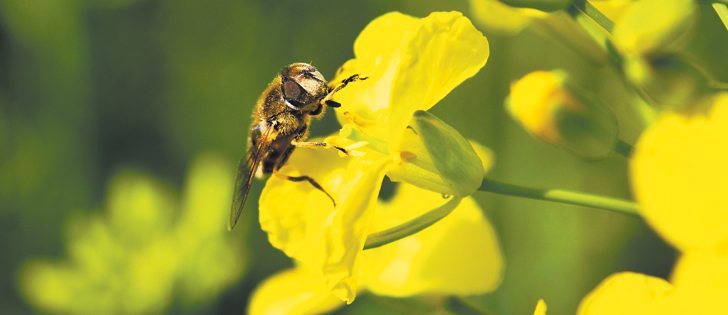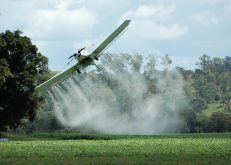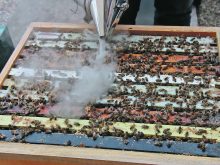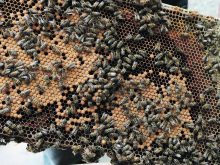BeeConnected is the latest software created to assist farmers with better on-farm practices. It enables communication between beekeepers, sprayer operators and farmers.
CropLife Canada and the Canadian Honey Council worked together to develop the free app.
It shares information of farm pesticide activities and beehive locations with registered users. The app will provide information through a web browser, iPhone or Android device.
There has been strong interest in improving communication be-tween all parties to help prevent bees from being inadvertently exposed to pesticides.
Read Also

Growing garlic by the thousands in Manitoba
Grower holds a planting party day every fall as a crowd gathers to help put 28,000 plants, and sometimes more, into theground
“We heard early on that often times communication wasn’t always there between those groups,” said Pierre Petelle, vice-president of chemistry with CropLife Canada in Alberta.
“This is strictly to open up the communication channel.”
Canola flowers are responsible for 80 percent of the honey produced in Canada, and 85 percent of flowering plants depend on pollinators for reproduction.
Studies have found that bees and other pollinators can provide up to 15 percent more yield when canola is self-pollinating.
However, a balance is required between bees and pesticides. Agricultural practices have a direct effect on the surrounding environment, and precautions are necessary to keep bees safe.
The app allows farmers to record when they are spraying and where. Beekeepers can respond by taking precautions, such as moving their hives.
“Bees and pesticides are critical for agriculture,” Petelle said.
“Canadian agriculture relies quite heavily on our technologies and a lot of them require pollination, so we see this app as a perfect fit.”
The app enables instant messaging between registered users, while keeping their identity private. The communication can be a one-way line or broadcast to registered users within a five-kilometre radius.
Fifty percent of the registered users are beekeepers, and the bee industry requested that the app keep communication closed between beekeepers so that hive locations could be kept confidential. There is a history of vandalism to hives across Western Canada.
Beekeepers also suggested the five-kilometre radius because it’s considered the approximate forage range for bees.
“(We) had some suggestions about including best management practices and links for applicators or even for beekeepers,” Petelle said.
“This year is kind of a soft launch. We want users to experience it, give us some suggestions, so we’re going to be actively seeking feedback at the end of this growing season.”
He encouraged farmers and beekeepers to register and take advantage of the app.
The honey council said the initiative will have a positive impact on the industry:
“Successful stewardship requires collaboration, engagement and support by all stakeholders. Where this occurs, the community can be assured that best practices are being consistently applied for the safety of users, consumers and the environment, including and especially for managing any risks to pollinators.”
Shelly Candel, director of Bee City Canada, said the app is a good initial step in starting communications.
“Beekeepers would like to see a commitment from industry partners to question why they are not promoting the reduction of pesticide use,” she said.
“Research shows that there is at least a 65 percent overuse of pesticides on corn and soybean.”
Her organization focuses on habitat loss and pesticide use as the major contributors to bee decline.
“Pollinators and especially bees require a diverse selection of flowers, preferably native, blooming from early spring to late fall,” said Candel.
Her organization distributes tools and information and registers communities as Bee Cities.
Toronto has recently joined the organization to protect pollinators and advocate on their behalf. Any city committed to pollinators can register at beecitycanada.org.

















